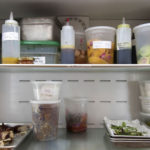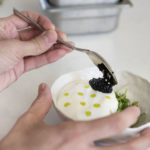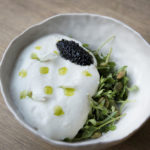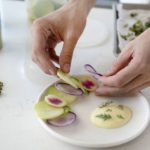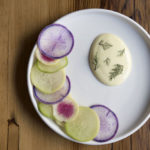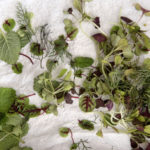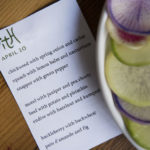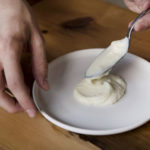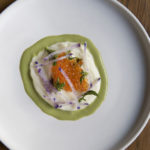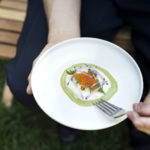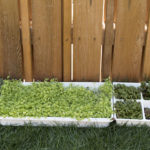
Last summer, after eating weed brownies at the beach, I grew suspicious of seagulls. Along with my similarly altered girlfriend, we decided they were straying just a little too close to our blanket. What was their agenda? Was it safe to fall asleep? And what’s with all the eye contact—did they know something? Those gulls totally harshed our mellow.
But let’s be real—if it hadn’t been the birds, we would have found something else to freak out about. Skin cancer. Stray frisbees. Tall people. The truth is, we had simply ingested too much cannabis; it would be many hours until our chill returned. Despite what felt like a rigorous Internet survey of suggested dosage, I had made the brownies way too strong. Fun was elusive.
My story is no anomaly. Most people I know who dabble in the weedy arts have had at least one freak-out experience. So have the esteemed Maureen Dowd and that infamous cop from Michigan who called 911 because he thought he was dying. Weed edibles often contain high concentrations of THC, at levels far too potent for the weekend stoner. But without expert guidance, the kind that comes from a robust, regulated cannabis industry, the risk of freakout is ever present.
But here in New York, a city where the underground cannabis economy is vibrant, it’s unsurprising that there are a raft of innovators and entrepreneurs, working to create a more pleasant edible experience for all. From chefs staging high-concept (get it?), multi-course weed dinners to artisans peddling cannabis-infused treats by bike, one priority seems consistent: responsible dosage.
“It’s not the goal anymore, to get you as stoned as possible by packing maximum cannabis oil into one cookie,” says Brooklyn’s Abdullah Saeed, avuncular host of the VICELAND TV video series Bong Appetit. “It’s an ingredient that’s valuable beyond its psychoactive properties. The ultimate goal isn’t just to get high; it’s about a holistic eating experience.”
To be frank, I’ve long been skeptical to consider an edible (no relation to the Edible magazines) as anything besides a novel way to get baked—and stay that way for hours. The argument “No man, it’s really about the food!” can ring a little hollow. It’s like those hemp legalization activists who spent years talking about the rope and beauty products we are being denied through prohibition. At the end of the day, doesn’t everybody just want to get stoned?

Not necessarily. Jonah Reider, the “Dorm Chef” who got famous for his cooking wizardry while he attended Columbia—even scoring an appearance on Colbert—thinks it doesn’t have to be that way. His company Pith specializes in unexpected, experiential dining (e.g., naked models getting painted in pizza sauce). Reider has a reputation for cooking with cannabis, but is really cautious of stereotypes.
“I would hate to be called a ‘weed chef,’” he says. “It’s not super-interesting in and of itself, in a culinary way. I love cooking as a way to bring people together, a social medium, but all too often weed can be isolating and anxiety-producing. My challenge is to use small amounts of cannabis to create refined, elegant, improvisational dinners.”
“It’s an ingredient that’s valuable beyond its psychoactive properties. The ultimate goal isn’t just to get high; it’s about a holistic eating experience.”
Reider uses maximum precision when measuring out how much cannabis to infuse—never more than 3 milligrams of THC per course. His goal is for people to barely notice anything is happening, while their sparkling conversation is being elevated and expanded as time elapses. A typical dish could be braised octopus, seared with a cannabis and smoked paprika puree, finished with black olive and hazelnut tapenade and tiny leaves of purple watercress. “People go home content and full, but not totally inebriated,” he says.
Beyond dosage issues, cannabis cuisine can be tricky in a flavor sense. As anyone who has eaten a crude weed brownie (what Reider calls the pot equivalent of “drinking Everclear”) can attest, it has a strong woody flavor that’s not compatible with a lot of flavors. But for chefs like Reider, this is a worthy challenge. He has had great luck mixing it in a plain ice cream base, in vodka cocktails or mixed in a sweet pea puree to put on duck breast.
Jason Pinsky, one of the producers of Bong Appetit, is excited by modernist techniques to remove that distinctive cannabis flavor. On one hand he touts cannabis distillate, flavorless and odorless but packing a psychoactive punch. On the other hand are terpenes, elements of the cannabis that can be extracted for different flavor profiles—but do not contain THC. Pinsky says terpenes are a brave new world for cannabis chefs. He even has staged “terpene pairings,” like it’s olive oil or wine. “We are well beyond weed brownies that only taste like weed,” he says. “If your cannabis butter is green, then you’re f*cking it up.”

Some cannabis culinarians are dabblers, plying their wares at private gatherings or for loved ones. But others, like chef Miguel Trinidad (Maharlika, Jeepney), have made legitimate—if not legal—businesses out of underground dinners. These companies, which operate almost-but-not-quite in plain view, have built profitable enterprises in New York’s edible ecosystem.
Along with Trinidad’s 99th Floor event company, Chef for Higher is another group staging regular (if clandestine) cannabis dinners around the city. Locations are secret; attendees typically come vouched for by previous guests. At one of their recent “Dinner is Dope” events in Williamsburg, offerings included Korean-style fried chicken with a soy-garlic glaze, pancit bihon and lychee martinis. While chef “Hawaii” Mike Salman and a squad of helpers furiously prepped dinner in a cramped residential kitchen, guests made merry at long, family-style tables in the next room.

Despite (or maybe including) periodic calls for smoke breaks, the kitchen functioned not unlike a non-cannabis analog. Calls of “What’s up with the daikon?” and “Aw sh*t, where’s the Maldon?!” ricocheted around the small space, while prep cooks and servers did their familiar dance. But in the next room, it was clear that this wasn’t a standard dinner soiree. Instead of wine, there were dozens of plastic Poland Spring bottles on the table (“Gotta stay hydrated!” says Salman). Many guests wore classic stoner gear—read: pot leafs on hoodies, caps, etc.—and space-age vaporizers shared table space with utensils and condiments.
Though guests end up ingesting a significant amount of THC over the course of three hours (100 mg, roughly), Salman insists it’s delivered slowly enough that no one will lose their cool. That assertion seemed contradicted early on when two guests got too high and had to leave, but the chef says it’s because they were smoking joints. “If they just stuck with the food we served them, they wouldn’t have issues,” a mildly frustrated Salman vented.
Mary Jane*, proprietor of edible delivery service Green Fairy, says she feels a duty to educate her customers on responsible dosage. Jane has had her share of unpleasant highs in the past; it’s a state she’d wish on no one. “Consistency is so important to me,” she says. “I’m doing all these nutty math equations so everyone gets the same dose.” Of course, all that science is not to discount the gourmet aspects of her craft—on top of lemon bars and blondies, Jane makes items like almond butter and whiskey/huckleberry jam compote, ensconced in dark chocolate.
A consistent argument is made by many of these entrepreneurs: that they are perfecting a legitimate culinary craft, legal or not. Cannabis dinners are often compared to wine tastings; Michael Cirino, co-founder of the gonzo dining club A Razor, A Shiny Knife (you may remember them as the L Train fine dining pranksters), has perfected cannabis-infused bitters that allow you to rigorously control your own dosage. “This should be pleasant, like pourover coffee, or finding the right ice for your cocktail,” he says.
https://www.instagram.com/p/BR-4fZPj_wP/
But New York is not California (where Bong Appetit is filmed), and the laws here are pretty clear. An illicit status may add some allure but ultimately makes it difficult for New York cannabis craftsmen to scale up their business. While, as one of my interviewees (who prefers to remain anonymous) says, the NYPD likely “have bigger fish to fry,” it’s acknowledged across the board that it would be unwise to operate without some degree of secrecy. “I certainly am inhibited from making this a large-scale operation,” says Greta Simon*, a Milk Bar alum who operates an edible cookie business in the city. “I’m fine where I am, but too much attention and the cops will feel obligated to notice.”
Some worry that, even as cannabis has moved more toward the mainstream in the last few years, the new administration may crack down (Attorney General Jeff Sessions is no fan of weed). “Wait and see” seems to be the operative phrase of the moment. At least one edible entrepreneur sees an upside to keeping things underground, though. “I fear what would happen if this were legalized,” says Green Fairy’s Jane, who was raised in the Midwest. “If it becomes big business, we might lose that personal touch. I still feel like an old neighbor lady giving sugar cookies at Christmas.”
*some names have been changed


